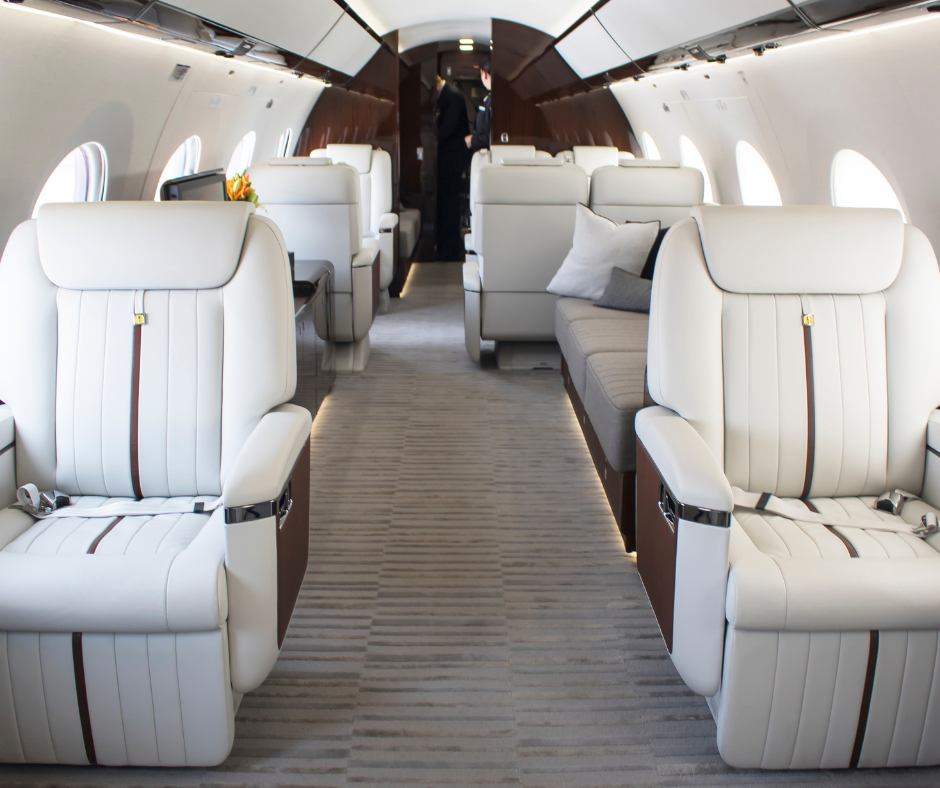As immersive technologies like Augmented Reality (AR) and Virtual Reality (VR) develop, so too does our understanding of their possible applications across a range of industries- including aviation. Both AR and VR have great potential and could be put into service in many ways, including for pilot training, aircraft maintenance, design, and to enhance the overall passenger experience.
Pilot training with AR and VR
Virtual Reality (VR) and Augmented Reality (AR) are increasingly being used in pilot training thanks to their ability to re-create realistic real-life scenarios in flight simulations. They allow pilots to prepare for events such as the loss of an engine, landing in adverse weather, and other emergencies within a controlled scenario.
As well as learning to respond to any sort of unexpected in-flight event, pilots can make use of VR and AR for maintenance training, practising troubleshooting and repairing different systems within the aircraft. Both VR and AR can help train pilots efficiently, greatly reducing the costs and time involved while giving them a better overall knowledge of their aircraft – thereby increasing the safety of everyone on board.

Design, maintenance, and manufacturing
The unsung heroes of aviation are the people who design, manufacture, and maintain the aircraft – and technology can help them do their job, too. Both AR and VR can be used to visualise and test aircraft designs before they are built, allowing engineers and designers to spot and correct issues before manufacturing even starts.
Simulations can also play a part in training technicians on various maintenance and repair procedures, the same way they help train pilots to improve their troubleshooting skills. From component testing to system integration, there is almost no regular aircraft maintenance task that cannot be made quicker, safer, and less expensive through the use of immersive technologies.
As for the manufacturing stage, another technology is taking the aviation world by storm: 3D printing. This technology, which can create complex shapes and structures with high accuracy and at relatively low costs, is a valuable tool for aerospace manufacturers. It has been successfully used for prototyping, as well as for the creation of aircraft parts and custom tools. With the ability to print new aircraft components on demand, manufacturers will increasingly be able to meet orders faster and without the need to hold a huge catalogue of spare parts.
Airport security
The implementation of immersive technology has the potential to greatly improve airport security in many areas, from boosting the accuracy and efficiency of security screenings to the training of personnel. As in the case of pilots, VR simulation of real-life scenarios can be an important tool to train for security incidents, improving responses at critical times. AR technology is a powerful tool which can provide real-time information concerning passengers, helping airport staff to quickly identify potential security risks. We’re already seeing this in action today with modern 360-degree body scanners able to scan passengers quickly and efficiently, reducing wait times at security checkpoints.
With more time on their hands, passengers may enjoy the experience immersive technology offers. That could mean having VR headsets to explore the airport, or to enjoy a virtual tour of the destination, or of any destination on the flight path – the possibilities are endless.

Drones and airports: from threats to allies?
Many will recall the Gatwick Airport drone incident, which saw hundreds of flights cancelled days before Christmas due to the presence of drones close to the runway. The thought of ‘drones swarms’ operating in an airport could therefore be worrisome at first glance, but industry experts believe that these clever pieces of kit have great potential for air traffic management, when placed in the right hands and authorised for use.
Drone swarms are groups of drones which work in harmony with each other to achieve a common goal. Their possible use in aviation is being explored to increase efficiency and safety, particularly in regard to their ability to monitor the ‘drone zone’ – a low-altitude airspace where drones usually operate. Such technology might have prevented the Gatwick crisis in 2018, but research into the use of drone swarms for air traffic management is, while promising, still in its early stages.
Research into another potential use for drones is, however, further along the way: that of drones for the transport of cargo. Currently, drone-based cargo transportation is for the most part reserved to last-mile deliveries – but many in the industry are betting on a future where longer-range cargo transportation through drones will be an everyday reality. For this to be the case, a few remaining technical and regulatory challenges will need to be resolved.
Overall, these are incredibly exciting times for aviation. At Airmacs, we’re keeping a keen eye on everything that is likely to shape the future of the industry in the coming years – so that whatever comes next, we’ll be able to offer you the best expertise, services, and prices.











